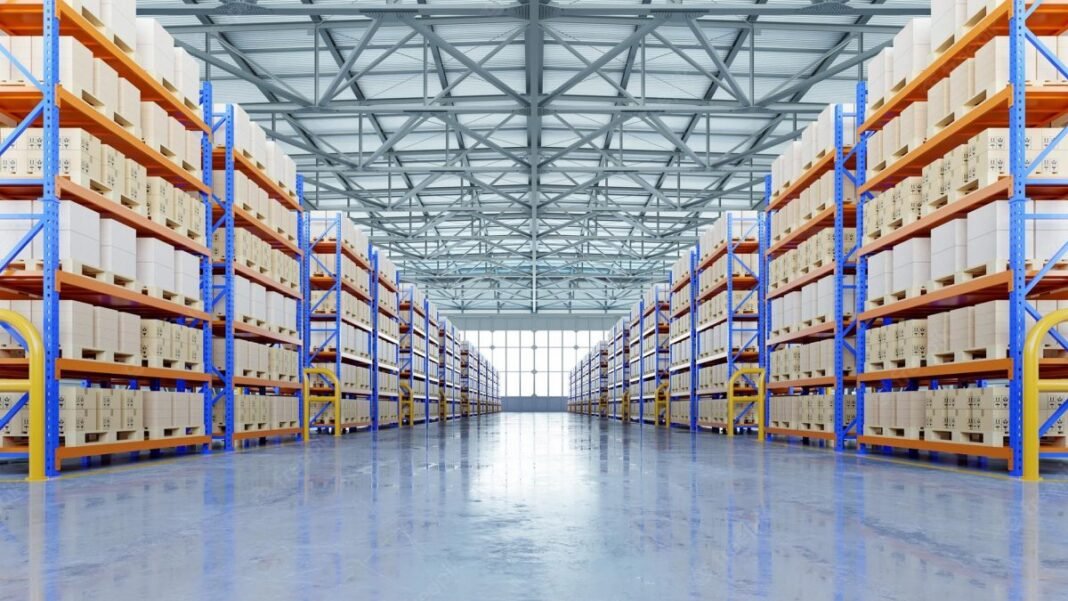News
Industrial & Warehousing Real Estate Records 24.5% YoY Demand Growth in H1 2025: Savills India

Gurugram, June 30, 2025: The industrial and warehousing real estate segment witnessed robust absorption of 34 mn sq ft (MSF) in the first half of 2025, reflecting a 24.5 per cent YoY increase compared to the 27.3 MSF absorbed during the same period in 2024, according to the latest findings by Savills India, a global real estate advisory firm.
Absorption was driven by a substantial contribution from the manufacturing segment and sustained demand from the 3PL segment, followed by the e-commerce, FMCG/FMCD and retail segments. Notably, Tier 1 cities accounted for 77 per cent of total absorption while Tier II and III cities took the remaining 23 per cent.
On the supply side, the market witnessed a fresh supply of 33.4 MSF, of which Tier I cities accounted for 27.3 MSF (82 per cent) while Tier II & III cities contributed 6.1 MS (18 per cent). The market witnessed the delivery of projects across cities in tandem with the growing demand.
Absorption (mn sq ft) across cities

Note: Tier I cities include Ahmedabad, Bengaluru, Chennai, Hyderabad, Kolkata, Mumbai, Delhi-NCR and Pune. Tier II and III cities include Guwahati, Bhubaneshwar, Patna, Hosur, Coimbatore, Rajpura, Lucknow, Jaipur, Nagpur, Surat, Indore, Kochi, Hubli, Vizag, Belgaum and Anantapur.
Supply (mn sq ft) across cities


“India’s industrial and logistics sector is on track for significant expansion with projected absorption expected to exceed 65 MSF in 2025. This growth is being driven by strong demand from the manufacturing sector and sustained momentum in third-party logistics (3PL) and retail. A key catalyst is the rapid rise of the e-commerce industry, particularly the increasing footprint of Q-commerce (quick commerce) players, which is reshaping supply chain dynamics,” says Srinivas N, MD, industrial and logistics, Savills India.
“Beyond traditional metropolitan hubs, Tier II and III cities are emerging as crucial growth engines. These cities are becoming integral to sourcing, consumption and distribution networks, positioning themselves as the next frontiers for industrial and logistics development.”
This surge in demand presents “new opportunities for developers, investors and occupiers, creating significant opportunities across the value chain, solidifying India’s role as a global logistics and manufacturing leader”.
Grade-wise supply (%)

Grade-wise absorption (%)

The shift towards Grade A spaces is increasing with the share of demand rising from 39 per cent in H1 2024 to 55 per cent in H1 2025. Meanwhile, the share of Grade A supply grew from 49 per cent to 58 per cent during the same period. This growth is driven by a combination of demand- and supply-side factors, including a growing emphasis on ESG standards, quality and compliance. By the end of 2025, Grade A spaces are projected to account for over 60 per cent of both total supply and absorption.
Segment-wise absorption (%)

Note: Other segments include space take-up by cold storage, chemicals, FTWZs, ICDs, agriculture warehousing, self-storage and manufacturing storage.
The manufacturing sector witnessed a significant surge in activity, with its share of total space absorption rising from 22 per cent in H1 2024 to 32 per cent in H1 2025. This growth has been propelled by a series of Central and state-level incentive programmes, notably the Production Linked Incentive (PLI) Scheme, which continues to drive investment and expansion.
In contrast, the 3PL segment saw its contribution decline from 33 per cent in H1 2024 to 26 per cent in H1 2025, primarily due to reduced supply chain outsourcing by FMCG and FMCD companies aiming to optimise operational costs.
The e-commerce segment has almost doubled its contribution to overall absorption, increasing from 6 per cent in H1 2024 to 11 per cent in H1 2025 while the contribution of the FMCG/FMCD and retail segments stood at 11 per cent and 7 per cent, respectively, in H1 2025.
City-wise supply (%) and absorption (%)

Among the major cities, Delhi-NCR led the pack with the highest absorption in H1 2025 at 19 per cent followed by Pune and Mumbai each at 15 per cent and Bengaluru at 10 per cent. Meanwhile, Tier II & III cities together accounted for 23 per cent of overall absorption. In terms of supply, Delhi-NCR accounted for the highest contribution at 18 per cent in H1 2025, followed by Pune at 17 per cent, Mumbai at 16 per cent and Tier II & III cities at 18 per cent of the total supply.

 News4 weeks ago
News4 weeks agoMaharashtra Govt and Lodha Developers sign Rs 30K-Crore MoU for Green Integrated Data Centre Park

 News4 weeks ago
News4 weeks agoUP RERA launches 20th Real Estate Agent Training Program at Gautam Buddha Nagar

 News4 weeks ago
News4 weeks agoHCBS Developments Appoints KBE as Construction Partner for Twin Horizon in Gurugram

 News4 weeks ago
News4 weeks agoWehouse Raises ₹25 Crore Series A Funding to Expand Tech-Driven Home Construction Across India

 News4 weeks ago
News4 weeks agoRISE Infraventures Strengthens Leadership with Appointment of Ajay Malik as CSO

 News4 weeks ago
News4 weeks agoHumanscale Ranked No. 1 for Sustainability in Contract Furniture Industry

 News4 weeks ago
News4 weeks ago‘Real Estate to Scale up Office and Industrial Assets Beyond 2 Billion Sq Ft By 2047’

 News4 weeks ago
News4 weeks agoAllcargo Supply Chain Expands Southern Footprint with Logistics Park Near Chennai



























